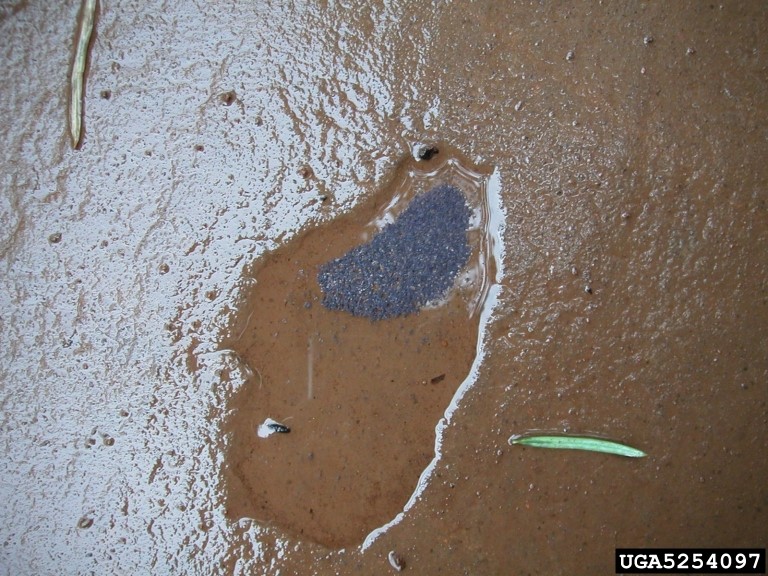The New Year has started out with some intriguing client questions, with a number of them involving calls and emails from folks who have found tiny insects by the thousands covering their driveways, sidewalks, and carports.
At first glance many people assume the colored mass is some type of mold or fungal growth; however, when they take a closer look, they see that there are actually thousands upon thousands of tiny little moving insects. Don’t worry, folks! While the appearance of so many tiny insects can be unnerving, they are harmless.
The culprits are tiny little critters called Springtails, which are quite small in stature. Generally, they are than 1/16 inch in length, wingless, and have limited vision. Their color can range from yellow to almost purple to greenish gray. There are approximately 700 species of springtails in North America, with their habitat varying from woodlands to the seashore.

They are perhaps the most common insect in the soil/ leaf litter habitat and are highly moisture-dependent, so outbreaks often occur where there exists persistent, excessive moisture and optimum temperatures. When specific moisture and temperature conditions are met, springtail numbers may skyrocket. When this occurs, numerous springtails can be seen jumping, as their name suggests.
Outdoors, outbreaks often occur from thatch or mulch and they can occur in numbers of up to 50,000 springtails in just one cubic foot of topsoil! These huge numbers can sometimes be found clinging together in clumps. They also can be found in thin layers covering the lower portions of garage doors or house foundations.
Springtails feed primarily on decaying vegetation. Other food items include soil fungi, pollen, algae, and lichens. The action of springtails helps to decompose organic material and release nutrients into the soil. For that reason, they are generally considered beneficial and indicators of good soil health.
Of course, if you have a wave of springtails inhabiting your garage they might not seem as beneficial. They seek out these moist locations when their usual habitat becomes uncomfortably dry. When they are found on sidewalks, garage doors, and similar areas simply wash them off with a water hose. The water will disperse the insects and provide moist condition in the surrounding soil for them to inhabit.
An indoor infestation usually takes care of itself due to lack of moisture and food; however, if springtails are present for a prolonged period of time, then that indicates there is a suitable level of moisture in the building. To limit entry into a building, seal or caulk any gaps in the foundation, doors, and windows.
Rather than searching for a chemical control option, just vacuum up any springtails found indoors and consider what you can do to adjust the indoor environment to make it less desirable. Food availability may also be an issue you can address. Search the inhabited area for any possible food sources, such as overwatered house plants or molds, to further manage the infestation.
Fortunately, most outdoor springtail infestations last only a few days until rainfall or a change in temperatures disperses the critters. By the time you read this, the conditions for
a springtail invasion will probably be past. Springtails are just another of the marvels of the natural world.